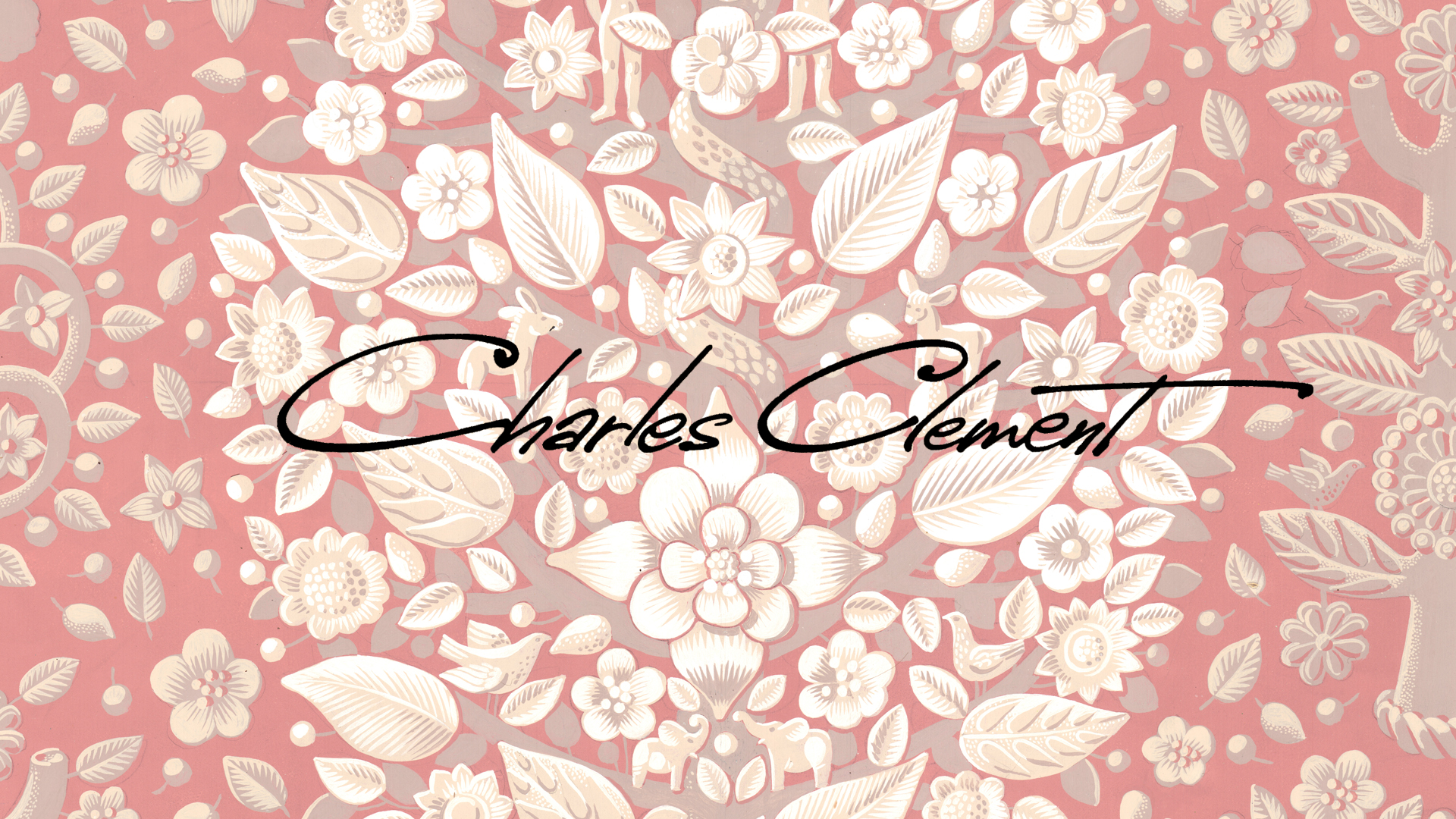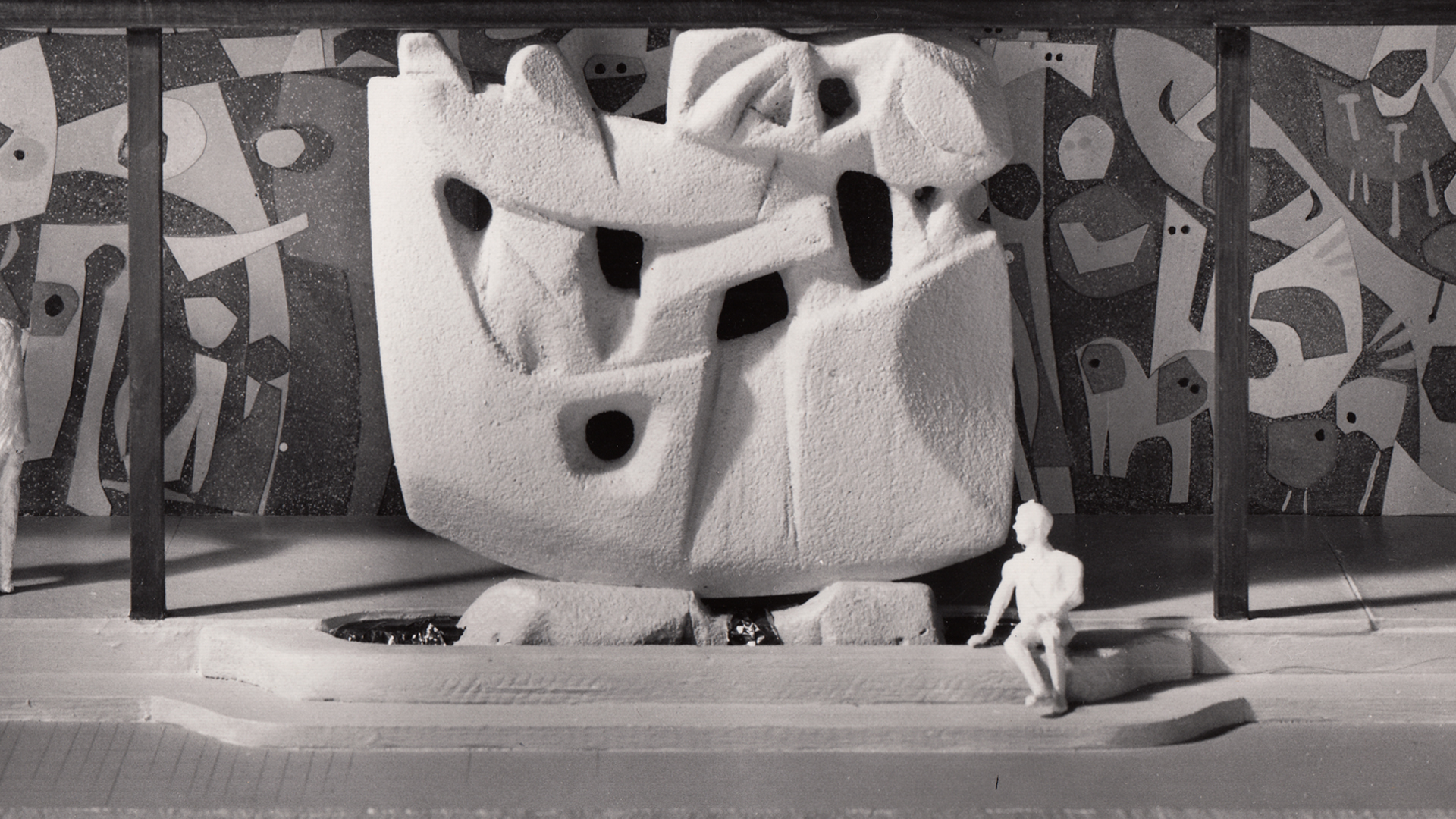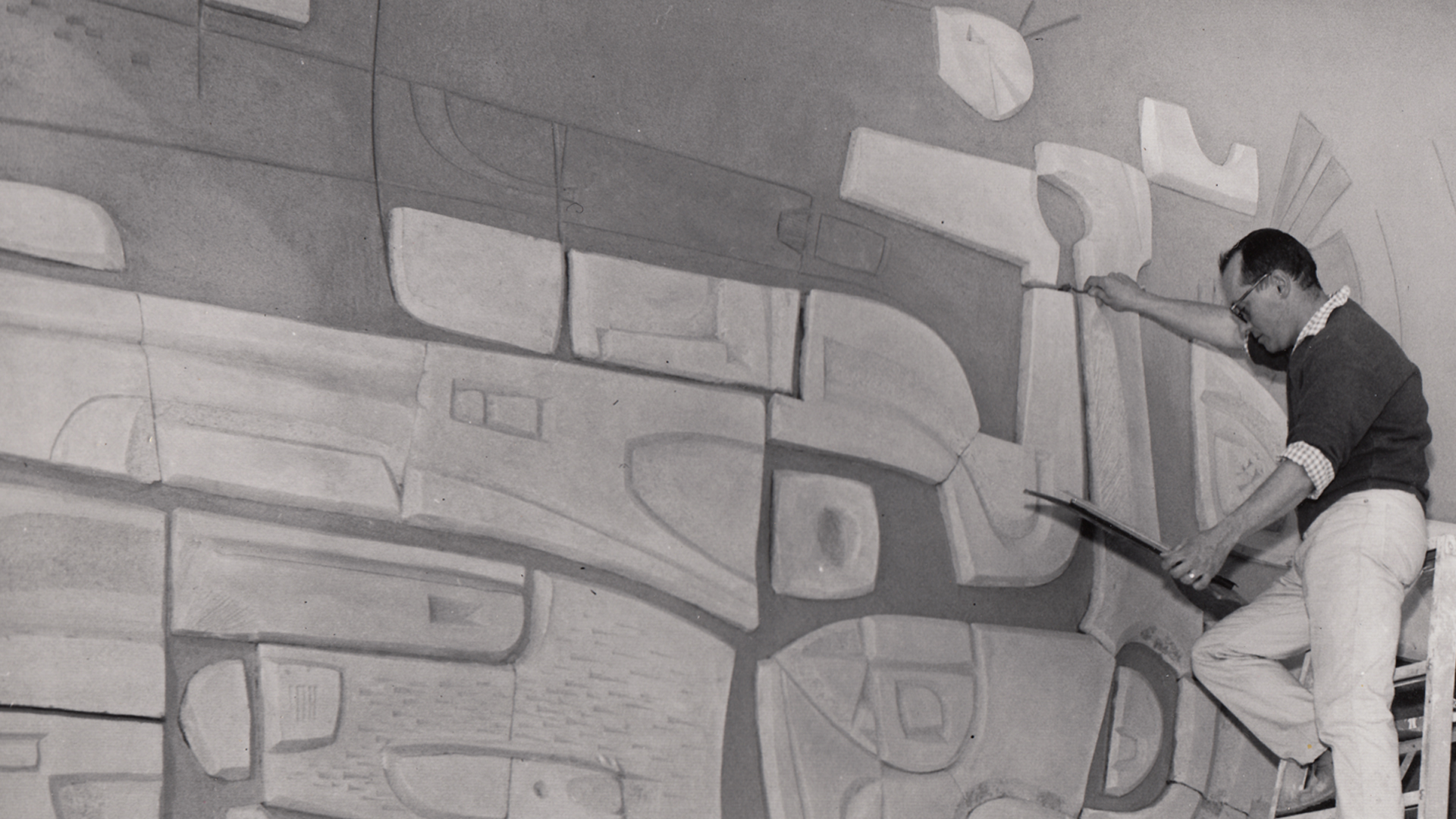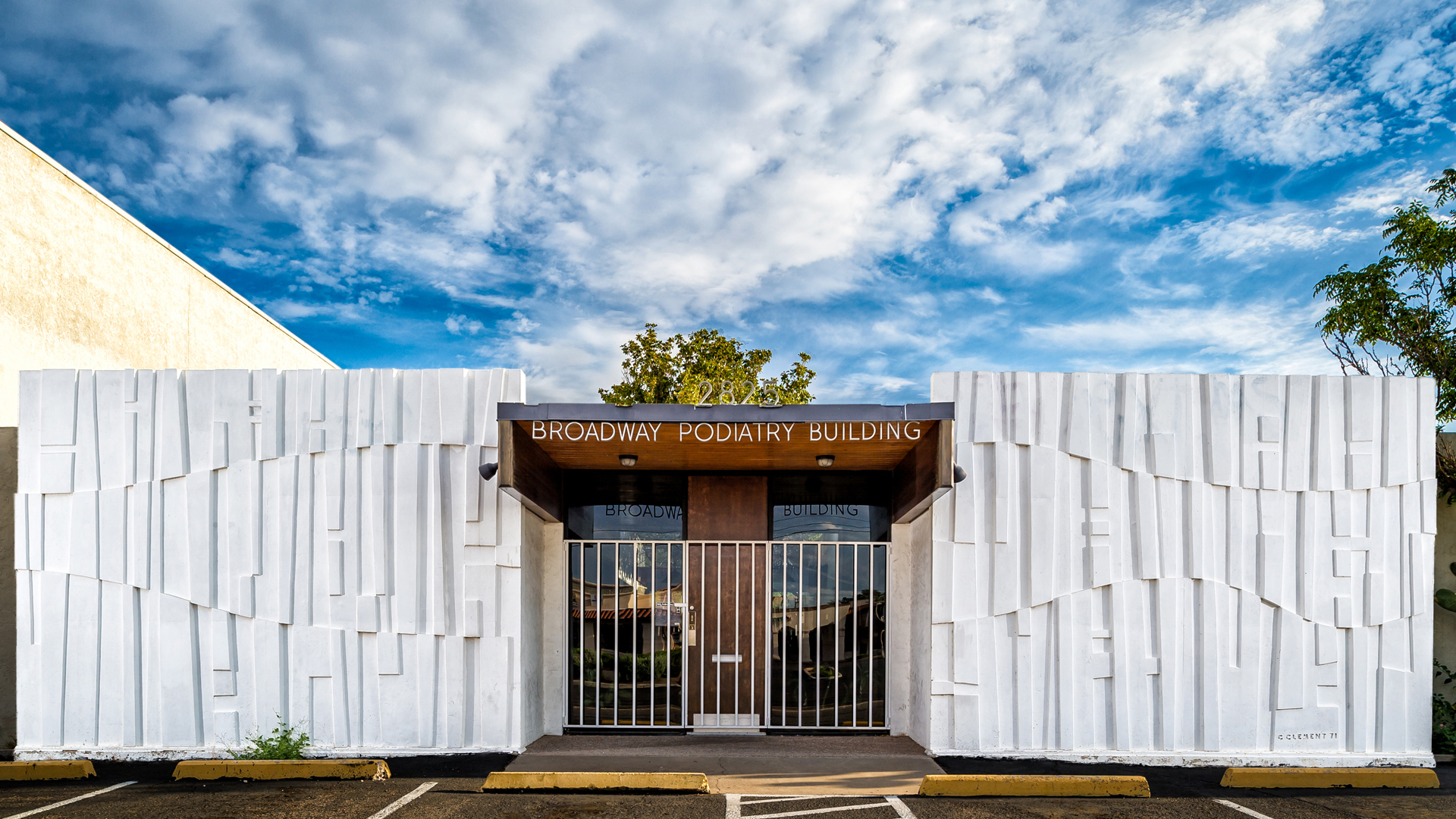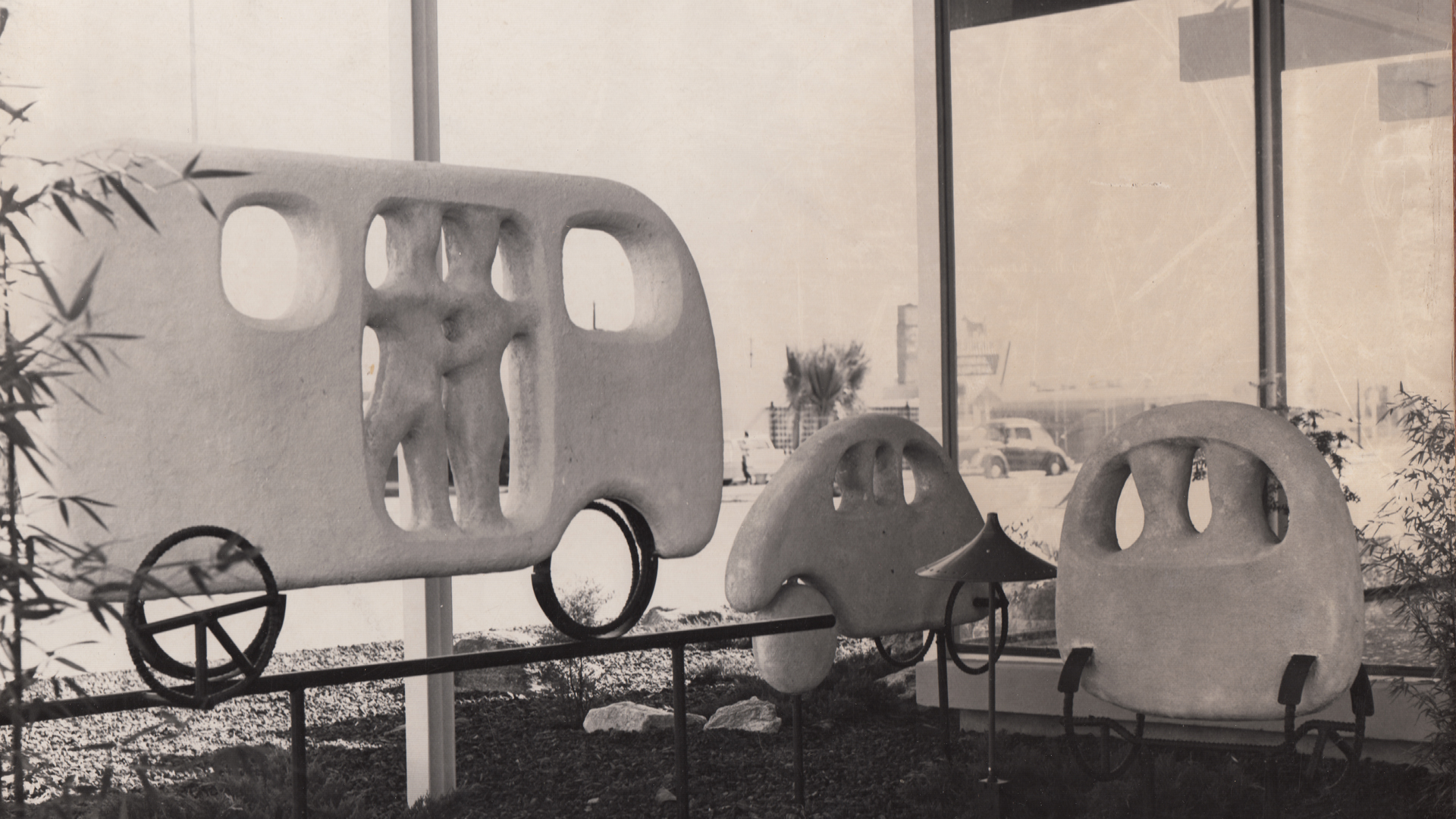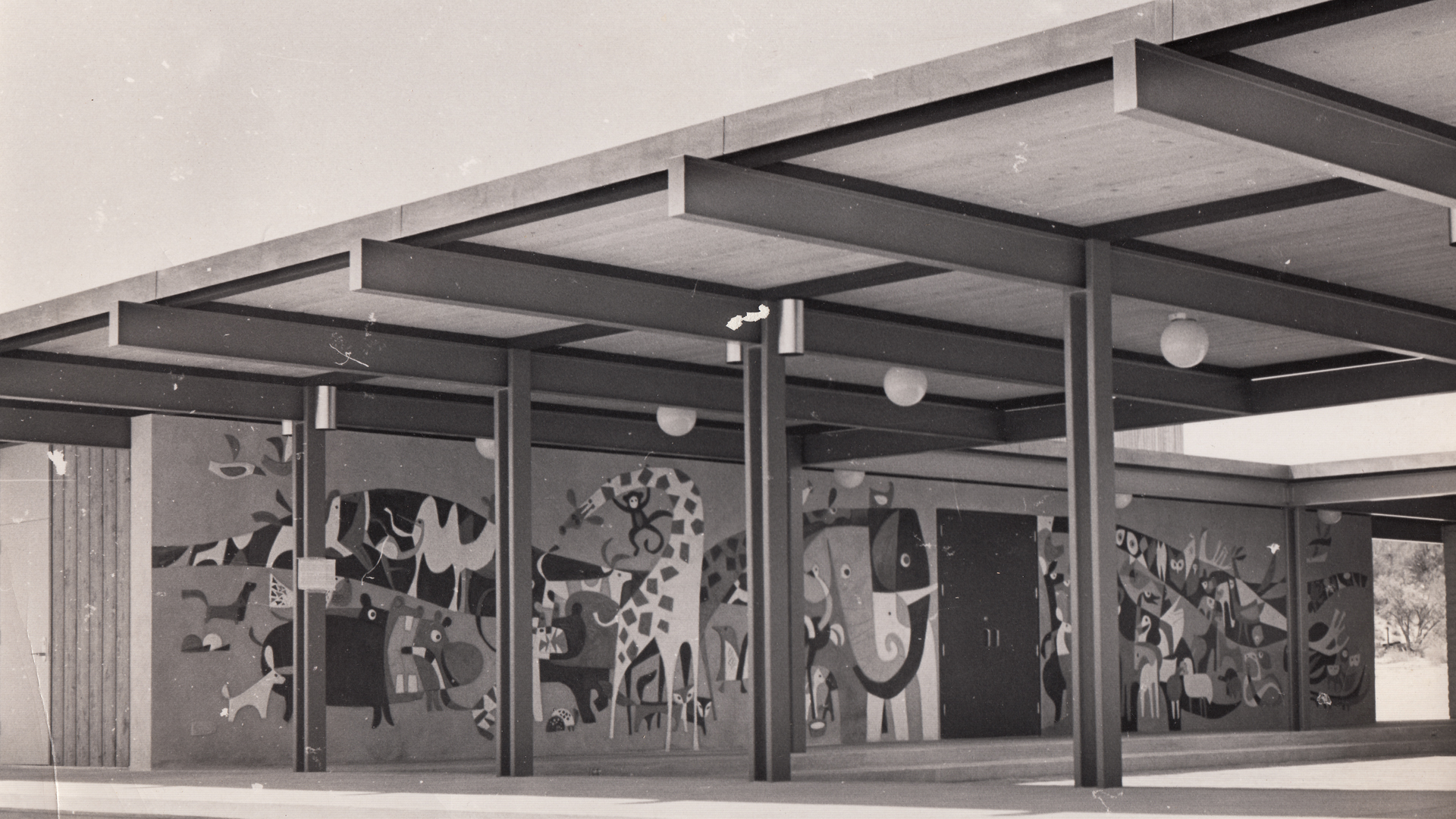Since 2021, the Tucson Historic Preservation Foundation has served as the exclusive curator of the art and designs of Charles Clement, preserving and promoting his vibrant legacy.
Following World War II, a generation of artists and designers began redefining the American visual landscape through bold experimentation and a rejection of traditional boundaries between disciplines. In Southern Arizona, Charles Clement emerged as a pivotal figure whose work fluidly integrated art into architecture, illustration, graphic design, and industrial design. Clement developed a singular modernist aesthetic—graphic, elemental, and deeply expressive of place. His visual language extended across media: architectural facades, interiors enlivened with integrated murals and textile panels, graphic identities marked by bold abstraction, and industrial objects designed with sculptural clarity. His work advanced a new model of regional modernism: one that embraced local culture and landscape while fully participating in the national and international dialogues of postwar design.
Through his prolific output and visionary integration of art and design, Charles Clement helped define the Southwest’s contribution to 20th-century modernism and left a lasting imprint on Arizona’s built and visual culture.
The Tucson Historic Preservation Foundation actively collects and stewards Charles Clement’s art, design, and ephemera. If you have works or items by Charles Clement that you would like to donate, we encourage you to share a photo with us at info@preservetucson.org. You can also mail the materials directly to THPF at PO Box 40007, Tucson, Arizona 85717, along with your name, email, and contact information for a letter of acknowledgment.
